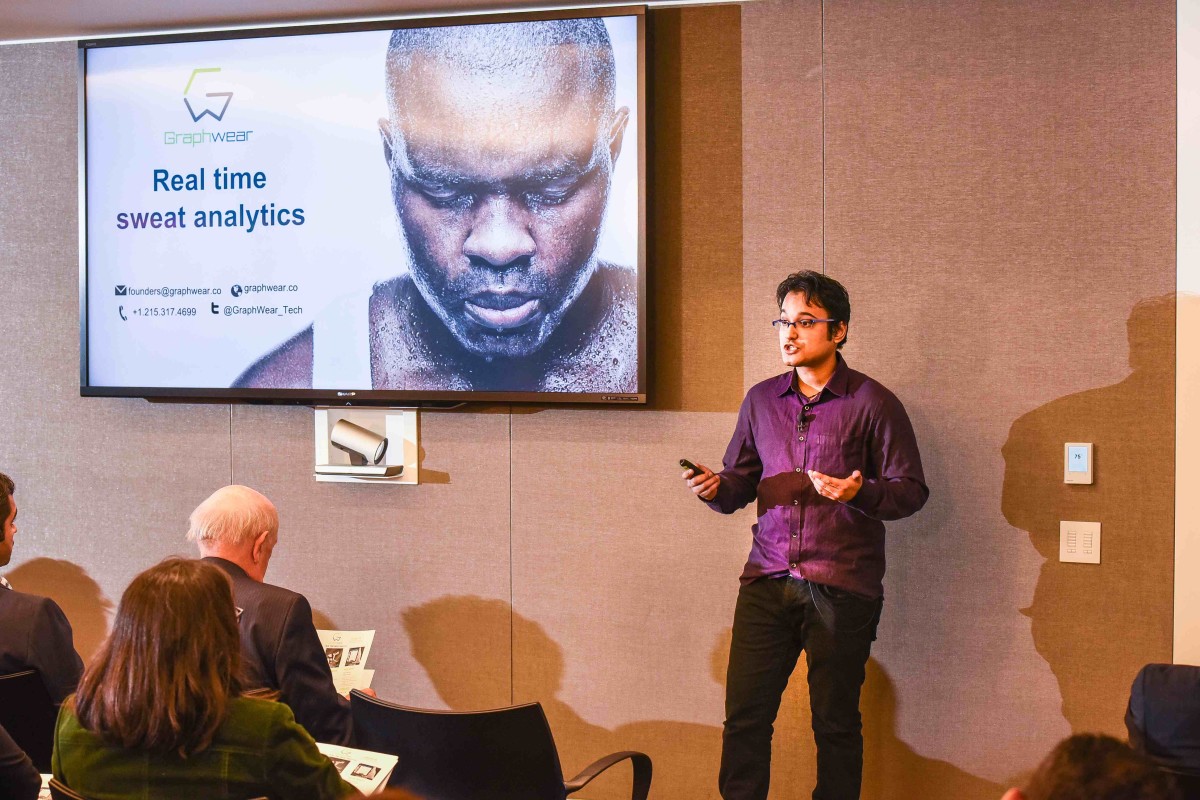In 2007, Rajatesh Gudibande enrolled as an undergrad in an institution in the Indian state of Andhra Pradesh, on the southeastern coast of India — the most underdeveloped part of the county — because that’s where a college education was free.
The cost, in this case, was the risk of developing malaria.
Gudibande came down with it four times. A trip to the hospital from the institution where he was studying required a 20-minute ride via tanga, or bull cart, then a transfer to a bus for a three-hour commute to an emergency room in the nearest city. It was those experiences that led him to an interest in medical research.
A few years earlier, a 10-year-old Saurabh Radhakrishnan, the son of a software company owner, was taking a flight to India from Singapore to visit his gravely sick uncle. His uncle had developed Stevens-Johnson syndrome in reaction to his gout medication. It’s a disorder that starts with flu-like symptoms and is followed by a painful rash that spreads and blisters. His uncle eventually recovered but his brush with death led Radhakrishnan to study nanotechnology and its healthcare applications.

A decade later, the pair met in Philadelphia.
They were both working at Penn spinout startup Graphene Frontiers — Radhakrishnan was an intern, getting his master’s in nanotech at Penn, while Gudibande, who had just completed his master’s in nanotech at Penn, was a product development manager. They soon became gym buddies. And, together, they became obsessed with sweat.
Gudibande, 26, and Radhakrishnan, 24, are the cofounders of GraphWear Technologies, a startup that is developing a patch that can analyze your sweat and communicate its findings via mobile app. It could tell you, among other things, when you need to drink water in order to prevent a muscle cramp. They’re currently focusing on athletes as their target customer but hope to develop healthcare applications.
The team works out of 3401 Market St., at Dreamit’s headquarters, and are currently part of the Science Center’s Digital Health Accelerator (DHA), alongside fellow Dreamit Health grads like Oncora Medical, Grand Round Table and Tissue Analytics. GraphWear got $50,000 from the DHA, as well as $50,000 from Dreamit Health, in exchange for 8 percent equity.
If you’re developing a patch that can be safely worn on the skin to collect data on the condition of the human body, you have to isolate a biological marker that can be measured. And that marker has to be carried in the equivalent of diluted and ultra-filtered blood, and collected without piercing the skin. Hence, sweat.
Believe it or not, the most difficult thing about completing their research is making sweat. It takes one hell of a workout to create actual drops as opposed to a stinky film. And where to collect it is another challenge. Gudibande discovered that a patch is most effective when worn in the natural gutter for sweat: the small of the back. He told that to the crowd at Dreamit Health’s demo day last October, placing the patch on the small of his back and jumping around to demonstrate how it worked.
The patch is made of graphene, the strongest material ever discovered and, when first isolated, won the 2010 Nobel Prize in physics. Using graphene as the base material in a patch that measures these markers is facilitated by the fact that graphene is chemically inert. This means it’s chemical composition doesn’t change when exposed to other elements. It’s unalterable, impenetrable.
While we spoke, Gudibande talked about the elusive graphene saying, “You have to play around with it.”
He told me this while talking about their patent-pending process that cuts roughly 13 steps from the production of a usable graphene film. When he first started handling the material, he asked a grad student why they never tried to find another way to reduce the lengthy and costly process. The grad student said, “That’s the way we do it.” So Gudibande started playing with it.
As he says, “You just have to try.”







